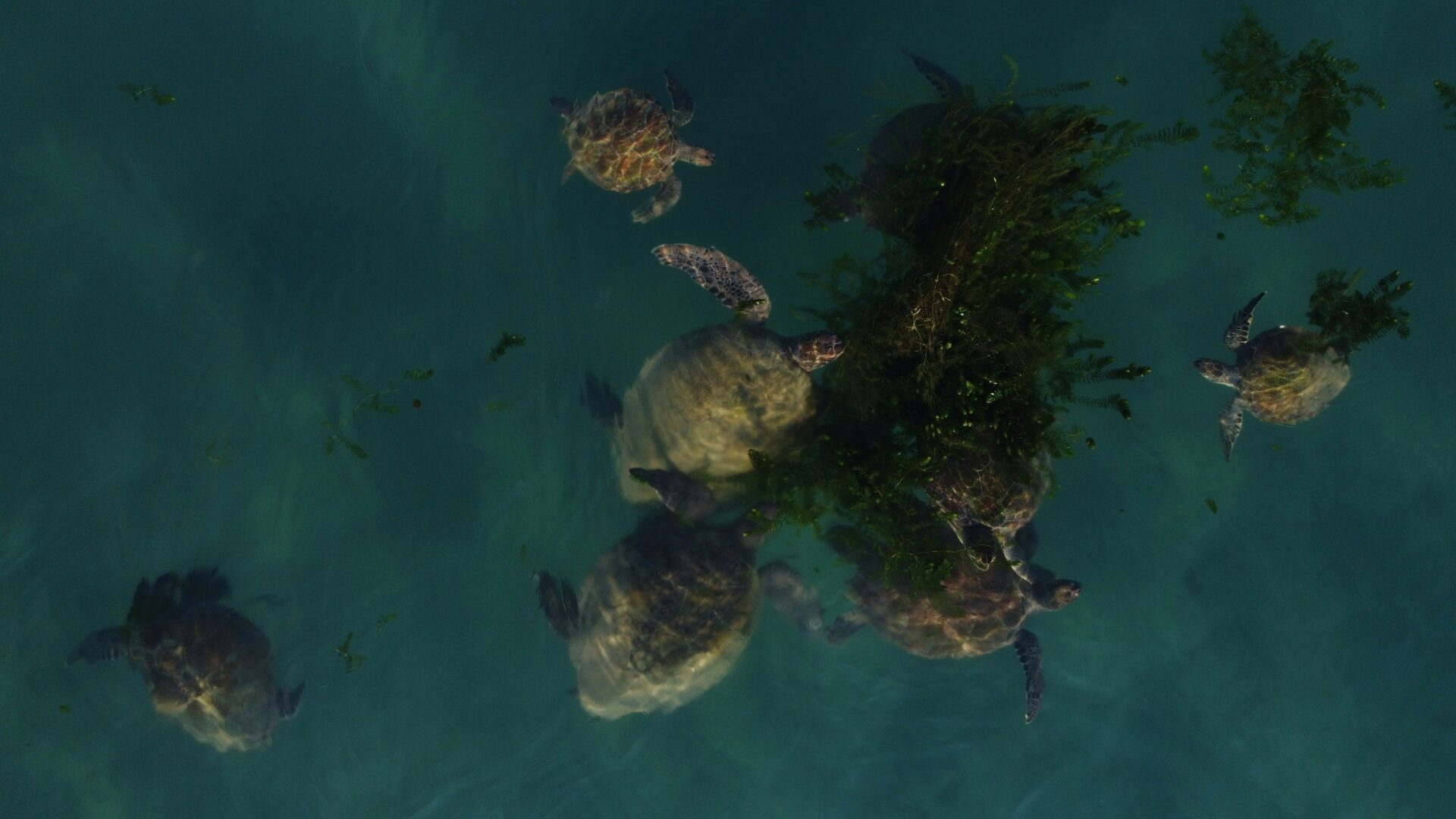In a stunning victory for marine conservation, the green turtle has been officially saved from the very brink of extinction, marking a significant turning point in the efforts to safeguard one of the ocean’s most ancient navigators.
Photography by Jesse Schoff & Aleh Tsikhanau
In a stunning victory for marine conservation, the green turtle has been officially saved from the very brink of extinction, marking a significant turning point in the efforts to safeguard one of the ocean’s most ancient navigators.
For centuries, green turtles were exploited for their meat, eggs, and shells. By the 1980s, the species had been driven to the brink. However, decades of coordinated global action – ranging from nesting beach patrols and hatchling releases to preventing accidental capture in fishing gear – appear to have paid off.
In its latest tranche of updates, the IUCN Red List has now officially downgraded the conservation status of the species, from Endangered to Least Concern.
“The ongoing global recovery of the green turtle is a powerful example of what coordinated global conservation over decades can achieve to stabilise and even restore populations of long-lived marine species,” said Roderic Mast, co-chair of IUCN’s Species Survival Commission Marine Turtle Specialist Group.
“Such approaches must focus not only on turtles but on keeping their habitats healthy, and their ecological functions intact. Sea turtles cannot survive without healthy oceans and coasts, and humans can’t either. Sustained conservation efforts are key to assuring that this recovery lasts.”
Named for the green hue of their body fat, a result of their largely herbivorous diet, green turtles are among the largest species of sea turtles. They are one of just seven sea turtle species alive today, two of which remain critically endangered.
New data shows encouraging signs of population recovery in several key regions, thanks to conservation efforts spanning nearly five decades. But experts caution that the species still faces significant pressures.

The latest Red List update, unveiled at the IUCN World Conservation Congress in Abu Dhabi, paints a mixed picture for the world’s biodiversity. Of the 172,620 assessed species, 48,646 are now threatened with extinction.
According to the IUCN, green turtles remain significantly depleted compared to their abundance prior to European colonisation and their widespread, unsustainable use and trade in many parts of the world.
Species are reclassified based on new evidence about their populations, habitats, and threats. While the green turtle’s reclassification to Least Concern represents a triumph for long-term conservation, experts stress it does not mean the species is safe.
Turtles continue to face habitat loss, marine pollution, climate-driven challenges, and entanglement in fishing nets. In locations such as Raine Island on the Great Barrier Reef – home to one of the largest remaining green turtle rookeries – conservationists have reported worrying declines in hatchling success due to rising temperatures and erosion.
Elsewhere, the Red List update brought sobering news from the Arctic. As sea ice continues to disappear at unprecedented rates, species such as the hooded seal have been moved from Vulnerable to Endangered, with bearded and harp seals now considered Near Threatened.
These ice-dependent species rely on stable sea ice platforms to breed, rest, and hunt – habitats that are rapidly vanishing in a warming world.
“Each year in Svalbard, the retreating sea ice reveals how threatened Arctic seals have become, making it harder for them to breed, rest, and feed. Their plight is a stark reminder that climate change is not a distant problem – it has been unfolding for decades and is having impacts here and now,” said Dr Kit Kovacs, co-chair of the IUCN’s Species Survival Commission Pinniped Specialist Group and Svalbard Programme Leader at the Norwegian Polar Institute.
“Protecting Arctic seals goes beyond these species; it is about safeguarding the Arctic’s delicate balance, which is essential for us all.”
Photography by Jesse Schoff & Aleh Tsikhanau

"*" indicates required fields
The worlds biggest ocean news.
Free to your inbox.
Every weekday.
Name
This field is for validation purposes and should be left unchanged.
.png)






